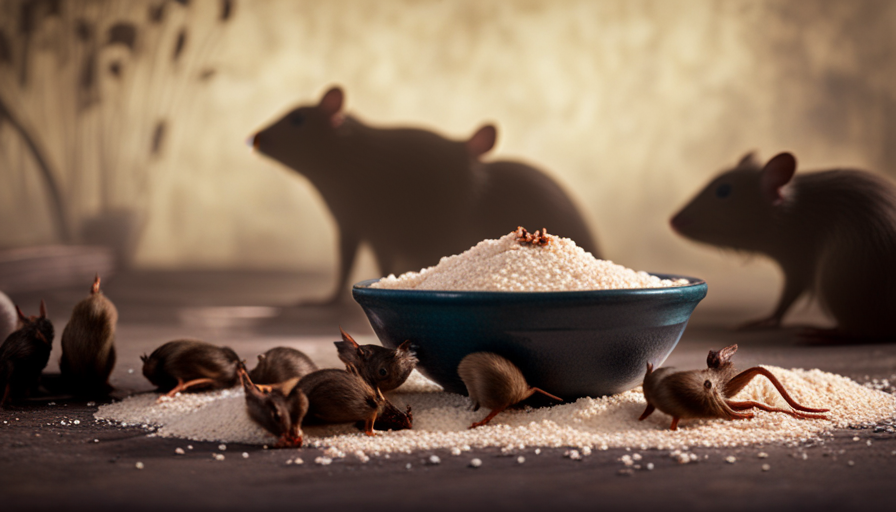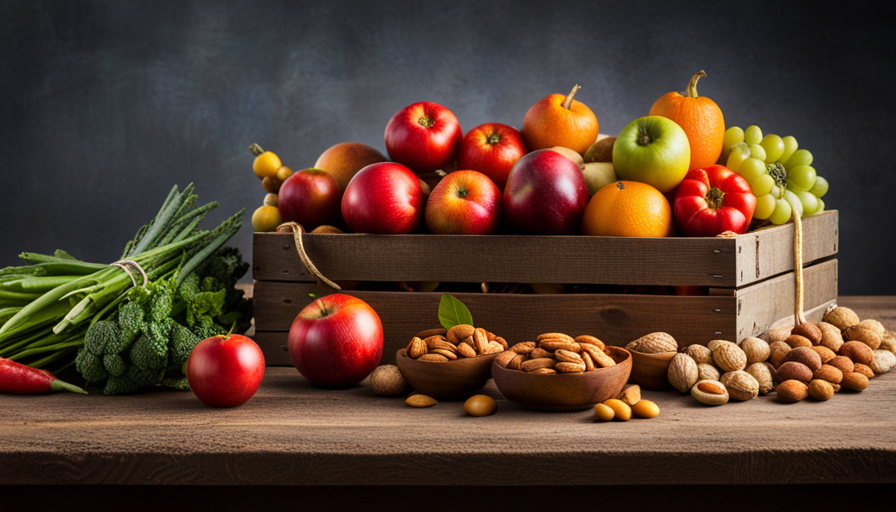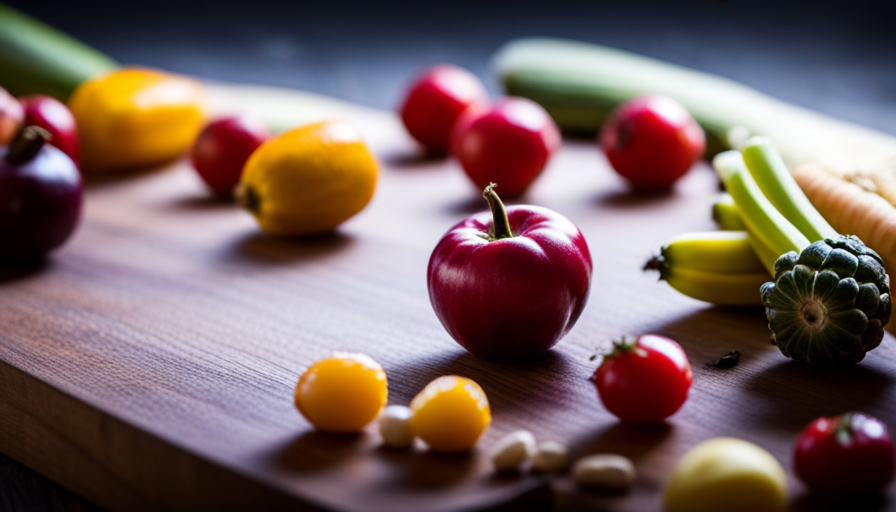Were you aware that consuming raw garri, a common food in Nigeria, has been associated with the transmission of Lassa fever?
It may come as a surprise, but recent studies have shown that consuming raw garri can increase the risk of contracting this deadly disease. Lassa fever is a viral illness that causes fever, muscle aches, and even organ failure, with a mortality rate of up to 50 percent.
The virus is transmitted through contact with infected rodents or their urine and droppings. Raw garri, made from fermented cassava, is often contaminated with rodent droppings during processing, making it a potential source of infection.
To protect yourself and your loved ones, it is crucial to understand the preventive measures to safely consume garri, promote hygiene and sanitation practices, and raise awareness about Lassa fever in communities.
Join me as we explore the different strategies to combat Lassa fever outbreaks and ensure the safety of our food supply.
Key Takeaways
- Consuming raw garri increases the risk of contracting Lassa fever, a viral illness with a high mortality rate.
- Raw garri is often contaminated with rodent droppings during processing, which can transmit the Lassa fever virus.
- Cooking or boiling garri thoroughly kills potential pathogens and reduces the risk of Lassa fever.
- Practicing good personal hygiene, such as regular handwashing with soap and water, and ensuring clean food preparation areas and storage containers, are crucial in minimizing the risk of Lassa fever transmission.
Understanding Lassa Fever: Causes, Symptoms, and Transmission
Do you know what causes Lassa fever, the symptoms to watch out for, and how it spreads?
Lassa fever is caused by the Lassa virus, a member of the Arenaviridae family. The primary reservoir of this virus is the multimammate rat, also known as the African rat. These rats shed the virus in their urine and feces, which can contaminate the environment and infect humans.
Transmission of Lassa fever mainly occurs through direct contact with the bodily fluids of infected individuals. This can happen through touching surfaces or objects contaminated with these fluids, or through close contact with an infected person. In addition, inhalation of tiny particles of infected rodent excreta can also lead to infection.
It is important to note that person-to-person transmission can occur in healthcare settings, especially if proper infection control measures are not followed.
Now, let’s delve into the link between raw garri and lassa fever outbreaks.
The Link Between Raw Garri and Lassa Fever Outbreaks
The association between consuming unprocessed garri and the occurrence of lassa fever outbreaks has raised concerns among health experts. Garri consumption is deeply ingrained in Nigerian cuisine, but it’s crucial to understand the potential risks involved. Here are some key points to consider:
-
Processing methods: Garri is made from cassava, a root crop commonly grown in Nigeria. Traditional processing involves peeling, grating, fermenting, and drying the cassava mash. However, if proper hygiene practices aren’t followed during these steps, the risk of contamination with the Lassa virus increases.
-
Rodent infestation: Rodents, particularly the multimammate rat, serve as natural hosts for the Lassa virus. Improper storage and handling of garri can attract rodents, leading to contamination. It’s essential to store garri in rodent-proof containers and maintain cleanliness in processing and storage areas.
-
Cooking and boiling: Cooking or boiling garri thoroughly before consumption can help kill any potential pathogens, including the Lassa virus. This step is crucial in reducing the risk of infection.
-
Personal hygiene: Practicing good personal hygiene, such as washing hands before and after handling garri, can minimize the chances of spreading the virus.
It’s important to take preventive measures to safely consume garri and reduce the risk of lassa fever outbreaks. Transitioning into the subsequent section about preventive measures, it’s vital to understand how to safely handle and process garri to ensure its consumption doesn’t pose a health risk.
Preventive Measures: How to Safely Consume Garri
To safely enjoy this beloved Nigerian staple, make sure you handle and process your garri with caution. Employ preventive measures that act as a shield against potential risks. Safe food handling is crucial when consuming raw garri.
Firstly, wash your hands thoroughly with soap and water before handling the garri. This helps get rid of any bacteria on your hands.
Additionally, store garri in a clean and dry container to prevent contamination. Avoid using containers previously used for storing other food items to minimize the risk of cross-contamination.
When cooking garri, it is recommended to heat it before consumption. You can roast the garri on a stove or in an oven until it turns golden brown. Heating the garri helps kill any potential bacteria or viruses.
It is also advisable to consume garri immediately after it has been cooked to reduce the risk of contamination.
By following these safe food handling and cooking techniques, you can enjoy garri without worrying about the potential risks of lassa fever. Remember, proper hygiene and sanitation play a crucial role in preventing the spread of diseases like lassa fever.
Importance of Hygiene and Sanitation in Lassa Fever Prevention
Regular handwashing with soap and water is essential in preventing the spread of Lassa fever. It’s a simple yet effective way to remove any potential virus or bacteria from our hands.
In addition, maintaining clean food preparation areas is crucial to prevent contamination of food with the Lassa virus.
By practicing good hygiene and sanitation practices, we can reduce the risk of contracting and spreading Lassa fever.
Regular Handwashing with Soap and Water
Make sure you wash your hands with soap and water regularly to prevent the spread of lassa fever when handling raw garri, a popular Nigerian food. Hand hygiene is crucial in reducing the risk of infection, and washing your hands with soap and water is the most effective method.
Here are three important reasons why regular handwashing is essential:
-
Removes germs: Soap and water can effectively remove germs from your hands, including the virus that causes lassa fever. By washing your hands thoroughly, you can eliminate any potential contaminants.
-
Breaks the transmission cycle: Handwashing interrupts the transmission cycle of lassa fever. When you wash your hands, you remove any viruses from your hands, preventing them from spreading to surfaces, objects, or other people.
-
Requires clean water: Clean water is essential for handwashing. Ensuring access to clean water is crucial in preventing the spread of lassa fever and other diseases.
Maintaining clean food preparation areas is another important step in preventing lassa fever.
Maintaining Clean Food Preparation Areas
Ensure your food preparation areas are spotless and free from any potential sources of contamination, creating a safe and healthy environment for you and your loved ones. Clean food storage is essential in preventing the spread of lassa fever. Store raw garri and other food items in clean, airtight containers to minimize the risk of contamination.
Regularly clean your food storage areas with soap and water, and ensure that they’re dry before storing your food. Additionally, proper waste disposal is crucial in maintaining a clean food preparation area. Dispose of food scraps and other waste in sealed bins to prevent attracting pests and spreading diseases.
By following these practices, you can significantly reduce the risk of lassa fever transmission. Moving forward, let’s discuss educating communities: raising awareness about lassa fever and its prevention methods.
Educating Communities: Raising Awareness about Lassa Fever
Hey there! Let’s talk about how we can spread the word and raise awareness in our communities about Lassa Fever. It’s crucial to educate people about this deadly disease to prevent its spread.
Here are some effective ways to raise community awareness and engage local leaders:
-
Organize community meetings: Gather community members and local leaders to discuss the importance of preventing Lassa Fever. Provide information about the symptoms, transmission, and prevention methods.
-
Distribute educational materials: Create brochures or pamphlets containing key information about Lassa Fever. Distribute them in public places like markets, schools, and healthcare centers. This will ensure that the message reaches a wider audience.
-
Conduct awareness campaigns: Collaborate with local radio stations, newspapers, and social media platforms to reach a larger population. Create catchy slogans or jingles to grab people’s attention and encourage them to learn more about Lassa Fever.
-
Engage community influencers: Seek the support of influential individuals in the community, such as religious or community leaders, to help spread the message. Their endorsement can have a significant impact on raising awareness.
By raising community awareness and engaging local leaders, we can ensure that more people understand the importance of early detection and prompt treatment of Lassa Fever. It’s crucial to take immediate action to prevent the further spread of this disease.
Early Detection and Prompt Treatment of Lassa Fever
When it comes to early detection and prompt treatment of Lassa Fever, recognizing symptoms and seeking medical attention are crucial.
If you experience symptoms such as fever, headache, sore throat, muscle aches, or vomiting, it’s important to seek medical help immediately.
Additionally, it’s reassuring to know that there are Lassa Fever testing and treatment centers available. These centers can provide accurate diagnosis and proper treatment for this viral illness.
Recognizing Symptoms and Seeking Medical Attention
If you start experiencing symptoms, don’t ignore them – seek medical attention immediately to protect yourself and your loved ones from the potential dangers of lassa fever.
Recognizing symptoms and seeking medical help early is crucial in preventing the transmission and controlling outbreaks of this infectious disease. By promoting public awareness and implementing surveillance measures, we can detect cases promptly and take necessary actions to prevent further spread.
It is also important to emphasize the importance of safe consumption practices, such as avoiding raw garri or other foods that may be contaminated, to reduce the risk of lassa fever.
Research and development, as well as global cooperation, are essential in finding effective treatments and developing vaccines. By working together, we can ensure the availability of lassa fever testing and treatment centers, enabling timely intervention for those in need.
Transitioning into the next section, let’s discuss the availability of lassa fever testing and treatment centers.
Availability of Lassa Fever Testing and Treatment Centers
The availability of testing and treatment centers for Lassa fever ensures that individuals can receive prompt medical care and interventions, playing a crucial role in preventing further transmission and controlling outbreaks.
In Nigeria, there are several testing and treatment centers specifically designated for Lassa fever. These centers are equipped with trained healthcare professionals who are knowledgeable about the disease and its complications. They provide accurate diagnostic tests to confirm Lassa fever and offer appropriate treatment options, such as antiviral medications and supportive care.
Additionally, public awareness campaigns and community outreach programs have been implemented to educate the public about the importance of seeking medical attention at these centers. This helps to reduce the stigma associated with the disease and encourages early identification and treatment.
By increasing access to testing and treatment centers, we can effectively combat Lassa fever outbreaks and protect the health of our communities.
Transitioning into the next section about surveillance and control measures, it’s essential to implement comprehensive strategies to prevent the spread of Lassa fever.
Surveillance and Control Measures: Combating Lassa Fever Outbreaks
To combat Lassa Fever outbreaks, you need to be aware of surveillance and control measures. These measures are crucial in detecting and responding to outbreaks effectively. Here are three key techniques used in Lassa Fever surveillance:
-
Case-Based Surveillance: This method involves tracking individual cases of Lassa Fever. Health workers collect data on patients’ symptoms, laboratory results, and demographics to identify patterns and trends. By monitoring these cases, health authorities can quickly detect outbreaks and implement control measures.
-
Community-Based Surveillance: This approach involves engaging communities in disease surveillance. Community members are educated on Lassa Fever symptoms and encouraged to report any suspected cases to local health centers. This grassroots approach helps identify outbreaks early, especially in remote areas where healthcare access may be limited.
-
Vector Surveillance: Lassa Fever is primarily transmitted through the urine and feces of infected rodents. Vector surveillance focuses on monitoring and controlling rodent populations to prevent transmission to humans. This includes identifying high-risk areas, implementing rodent control measures, and promoting hygiene practices to minimize rodent-human contact.
By implementing these surveillance techniques, healthcare systems can effectively detect and respond to Lassa Fever outbreaks. This helps in containing the spread of the disease and saving lives.
Moving forward, research and development will play a crucial role in finding long-term solutions to combat Lassa Fever outbreaks.
Research and Development: Finding Long-Term Solutions
You can envision a future where research and development are actively seeking long-term solutions to combat the recurring outbreaks of Lassa Fever. With the increasing prevalence of this deadly disease, it’s crucial to allocate adequate research funding to understand its epidemiology, transmission dynamics, and potential interventions.
By investing in cutting-edge technologies and innovative approaches, we can pave the way for more effective prevention and control strategies.
One area that requires significant attention is the development of rapid diagnostic tests for early detection of Lassa Fever. Currently, diagnosis relies on time-consuming laboratory tests, which delay treatment initiation and contribute to the spread of the disease. Technological advancements can revolutionize this process by enabling point-of-care testing, allowing for prompt diagnosis and immediate implementation of appropriate measures.
Another important aspect of research and development is the exploration of potential therapeutics and vaccines against Lassa Fever. Although progress has been made in this area, there is still a need for more effective treatments and preventive measures. By investing in research, we can identify novel targets for drug development and evaluate the efficacy of potential vaccines.
Research and development play a crucial role in finding long-term solutions to combat Lassa Fever outbreaks. By allocating research funding and embracing technological advancements, we can enhance our understanding of the disease and develop more effective prevention and control strategies.
This will ultimately contribute to the global efforts in Lassa Fever prevention and control, ensuring a healthier future for all.
Global Efforts in Lassa Fever Prevention and Control
Imagine being part of a global community actively working together to prevent and control the devastating impact of Lassa Fever outbreaks, where innovative research and collaborative efforts pave the way for a healthier future for all. The fight against Lassa Fever requires a coordinated global response and international collaboration. Here are five key aspects of the global efforts in Lassa Fever prevention and control:
-
Rapid Response Teams: Specialized teams are deployed to outbreak areas to provide immediate medical assistance, conduct contact tracing, and implement preventive measures.
-
Enhanced Surveillance Systems: Advanced surveillance systems are established to detect and monitor Lassa Fever cases, enabling early detection and timely response.
-
Research and Development: Ongoing research aims to develop effective diagnostics, treatments, and vaccines to combat Lassa Fever.
-
Public Awareness Campaigns: Comprehensive awareness campaigns are conducted to educate communities about the risks of Lassa Fever and promote preventive measures like hygiene practices and safe food handling.
-
International Partnerships: Collaboration between countries, organizations, and experts facilitates resource sharing, knowledge exchange, and capacity building to strengthen global preparedness and response.
These global efforts demonstrate the collective determination to eradicate Lassa Fever and protect communities worldwide. As we move forward, it’s crucial to promote safe consumption practices to prevent Lassa Fever.
Conclusion: Promoting Safe Consumption Practices to Prevent Lassa Fever
By practicing safe food handling and hygiene practices, we can collectively work towards preventing the transmission of Lassa Fever and ensuring the health and well-being of our communities.
Promoting awareness about safe consumption practices is essential in preventing the spread of this deadly disease.
To prevent Lassa Fever, it’s important to ensure that raw garri is properly processed before consumption. Garri should be thoroughly cooked to kill any potential viruses or bacteria. It should be soaked in boiling water for at least 10 minutes before consuming. Additionally, it’s recommended to store garri in a clean, dry, and airtight container to prevent contamination.
Another important aspect of safe consumption practices is personal hygiene. Proper handwashing with soap and water before handling food is crucial. It’s also advised to wash fruits and vegetables thoroughly before consumption. This helps remove any potential pathogens that may be present on the surface.
Furthermore, it’s important to educate individuals about the risks associated with consuming raw garri. Awareness campaigns can be conducted through community outreach programs, schools, and media platforms to promote safe practices. These campaigns should emphasize the importance of proper food handling, cooking, and personal hygiene.
Promoting safe consumption practices is vital in preventing the transmission of Lassa Fever. By raising awareness and implementing these practices, we can protect ourselves and our communities from this deadly disease. Let’s all take responsibility and work together to ensure a healthier future for everyone.
Frequently Asked Questions
What are the causes, symptoms, and transmission of Lassa fever?
Lassa fever is a viral illness that can cause severe symptoms and even death. The causes of Lassa fever are primarily due to contact with infected rodents or their droppings. The symptoms include fever, headache, muscle aches, and vomiting. Transmission occurs through direct contact with bodily fluids of infected individuals.
Now, let’s explore how raw garri, a popular Nigerian food, can potentially contribute to the spread of Lassa fever.
How is raw garri linked to Lassa fever outbreaks?
Raw garri has been linked to lassa fever outbreaks. Lassa fever is a viral illness that can cause severe symptoms and even death. It is primarily transmitted through contact with the bodily fluids of infected rodents, particularly rats. In some cases, raw garri may be contaminated with rat droppings or urine, leading to the spread of the virus. It’s important to properly process and cook garri to prevent the transmission of lassa fever.
What are the preventive measures to safely consume garri?
To safely consume garri, there are several preventive measures you can take. First, ensure proper hygiene by washing your hands thoroughly before handling the food.
Next, store garri in a clean, dry, and rodent-free environment to avoid contamination.
Additionally, it’s crucial to properly cook garri before consuming, as this can help eliminate any potential pathogens.
Lastly, practice good food safety habits, such as avoiding cross-contamination and consuming garri within a reasonable time frame.
How does hygiene and sanitation play a role in preventing Lassa fever?
Hygiene practices and sanitation measures are crucial in preventing the transmission of Lassa fever. Proper handwashing with soap and water before handling food, after using the toilet, and after coughing or sneezing can reduce the risk of contamination.
Maintaining clean and sanitary food preparation areas, utensils, and storage facilities is also important. Regular cleaning and disinfection of surfaces can help eliminate potential sources of infection.
These measures, when followed diligently, can significantly minimize the spread of Lassa fever.
How are communities being educated and made aware of Lassa fever?
Community engagement and government campaigns are key in educating and making communities aware of lassa fever. It’s important to emphasize the need for knowledge and understanding of the disease.
Through various initiatives, such as health education programs and awareness campaigns, individuals are provided with information on the symptoms, transmission, and prevention of lassa fever. This helps the community to take necessary precautions and seek appropriate medical care, ultimately reducing the spread of the disease.
Is Eating Raw Garri Safe, Or Can It Spread Lassa Fever?
The eating of raw food, such as raw Garri, can potentially spread Lassa fever if the food is contaminated with rodent urine or feces. To reduce the risk, it is recommended to properly process and cook Garri before consuming it. Proper hygiene and food safety practices can help prevent the spread of Lassa fever.
Conclusion
In conclusion, it’s crucial to promote safe consumption practices to prevent the spread of Lassa fever.
One interesting statistic that highlights the gravity of this issue is that Lassa fever has been reported in over 20 countries in West Africa. There are an estimated 100,000 to 300,000 cases occurring annually, resulting in approximately 5,000 deaths.
This alarming statistic emphasizes the urgent need for increased awareness, hygiene practices, and control measures to combat this deadly disease. By implementing these preventive measures, we can protect ourselves and our communities from the devastating impact of Lassa fever.










